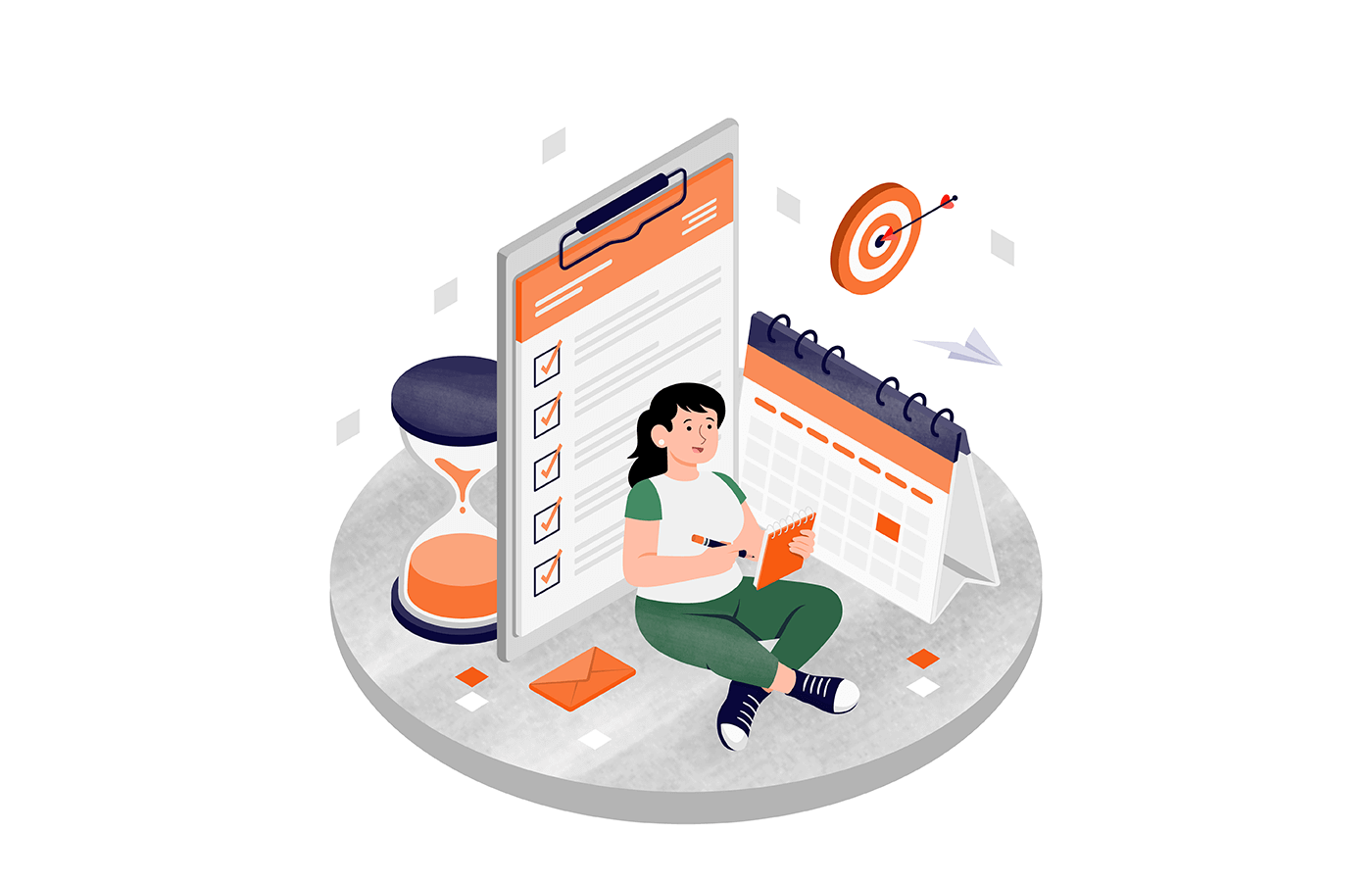After spending over a decade in email marketing, I can tell you one thing for sure – it’s still absolutely crushing it as a digital channel. The latest reports show it’s generating around $36 for every dollar invested.
This ROI makes most other marketing channels look average in comparison. A solid email marketing strategy can truly transform your results.
But here’s the kicker – not all email marketing campaigns deliver the same results. I’ve watched companies with nearly identical products get wildly different outcomes.
The difference almost always boils down to one thing: how thoughtfully they’ve segmented their email lists to reach their target audience.
I want to share how strategic email segmentation can completely transform your marketing results. No fluff, just practical approaches you can actually use to create effective email segments.
What is Email List Segmentation, Really?
At its heart, email list segmentation is about dividing your subscribers into specific targeted groups based on certain criteria. It’s the alternative to blasting identical content to everyone on your list.
You’re essentially customizing your approach rather than relying on a one-size-fits-all method that rarely works in email marketing segmentation.
When you group customers using demographic details (location, age), you create opportunities for more relevant content.
Similarly, when you segment based on behavior patterns (purchases, page visits) or directly shared preferences, you enable personalized communication that generic approaches can’t match. This behavioral segmentation is key to driving meaningful engagement.
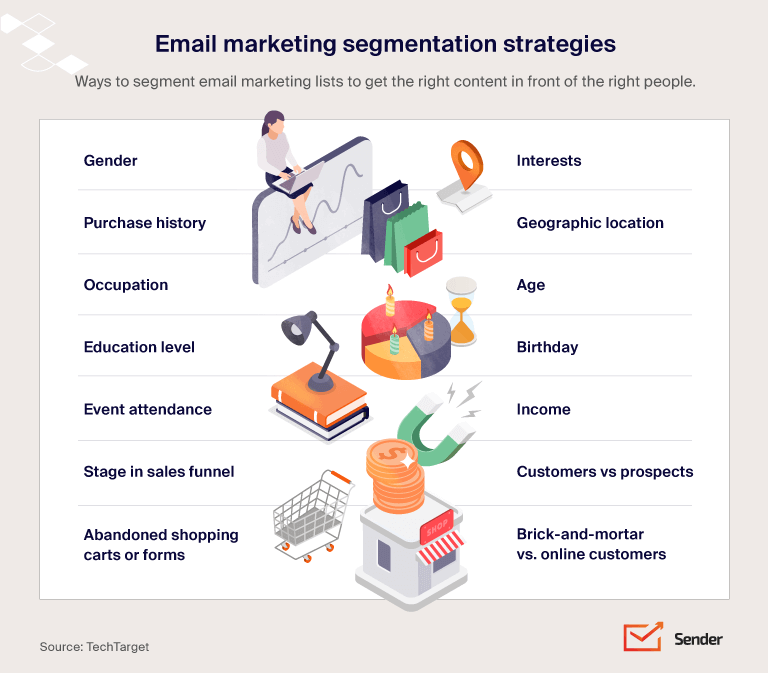
Proven Results of Targeted Emails
I’ve seen companies triple their conversion rates just by matching content to what their email recipients actually care about.
This tailored approach allows brands to send targeted campaigns that speak directly to each segment’s interests and needs.
The logic is straightforward – when people receive emails addressing their specific needs, they’re more likely to open, click, and convert.
Think of it as the difference between: Shouting in a crowded room (mass email blasts) Having a focused conversation with someone already interested (segmented email marketing campaigns)
The first might occasionally reach the right person by chance. The second creates meaningful connections almost every time.
Why Segmentation Actually Matters for Email Success
Email segmentation isn’t just some optional fancy feature – it’s absolutely crucial if you want your email marketing to perform. I’ve watched struggling marketing campaigns completely turn around once proper segmentation was implemented.
Here’s the real story on why it matters:
Higher Open and Click-Through Rates
The numbers tell the powerful story of segmentation effectiveness. Research from Mailchimp revealed that marketers using segmented email marketing campaigns see significantly higher engagement metrics.
Their comprehensive analysis found:
- Open rates 14.31% higher in segmented campaigns
- Click rates 100.95% higher compared to non-segmented campaigns
- Segmented email campaigns have 14.31% higher open rates and 100.95% higher click rates compared to non-segmented campaigns (Mailchimp).
I was skeptical at first too, but I’ve witnessed similar improvements firsthand. Why does this happen?
It’s simple – people open emails that seem relevant to them. When someone sees a subject line that speaks directly to their situation, they’re more likely to engage with what’s inside.
Lower Unsubscribe Rates
Few things damage an email program faster than high unsubscribe rates and spam complaints.
When email subscribers consistently receive irrelevant content, they get frustrated—eventually:
- Ignoring your emails;
- Unsubscribing from your list;
- Marking your messages as spam.
Segmentation tackles this problem by ensuring people only receive content they’ll find valuable. According to Mailchimp’s research, segmented campaigns experienced 9.37% fewer unsubscribes than non-segmented campaigns.
One client went from losing 3% of their list with each send to less than 0.5% simply by creating segments based on customer preferences and past purchases.
Better Personalization
Today’s consumers expect personalized experiences. McKinsley research shows 76% of consumers are more likely to purchase when brands offer personalized experiences.
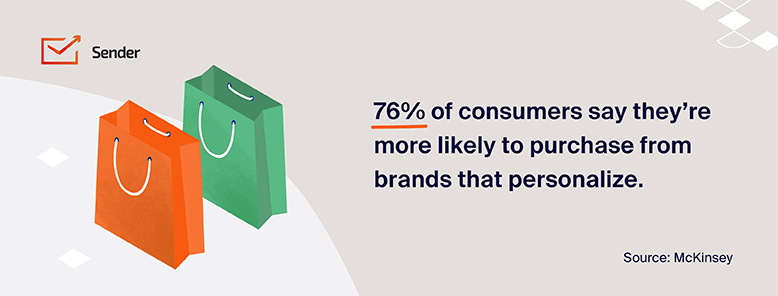
True personalization goes beyond just using someone’s name. It means delivering content that addresses:
- Specific circumstances;
- Individual challenges;
- Personal goals.
This level of relevance only becomes possible through thoughtful segmentation.
An ecommerce business I worked with began segmenting subscribers based on customer’s purchase history. The results? Their click-through rates nearly doubled overnight, and conversion rates increased by 35%.
Increased ROI
The combination of higher engagement and lower list churn leads to improved ROI. Litmus research found that targeted email marketing drives 36% of all email marketing revenue.
By creating targeted campaigns for specific segments rather than generic content, you achieve better results with less effort. This approach can significantly boost business growth.
A B2B client saw their email marketing ROI jump from 4:1 to 22:1 after implementing segmentation based on job title and company size. These benefits of email segmentation are hard to ignore.
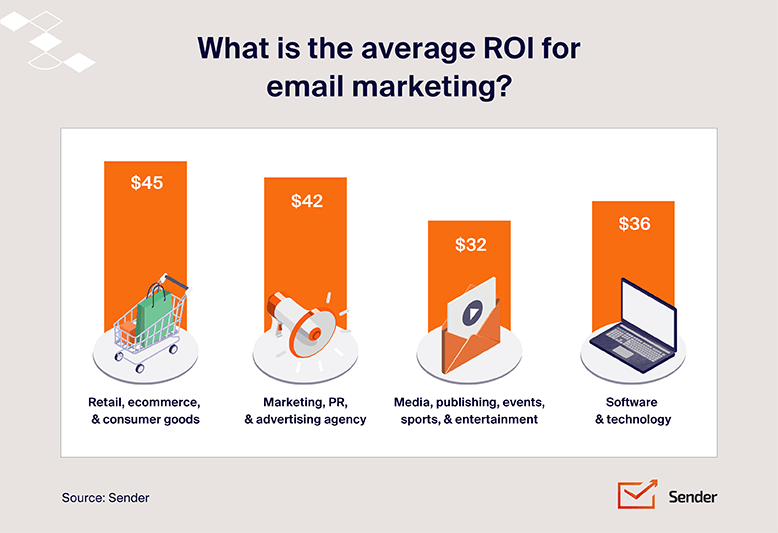
How to Segment an Email List Effectively
Getting started with email segmentation doesn’t have to be complicated. You can create email segments with these fundamental steps and gradually refine your approach.
Collect Subscriber Data
You can’t segment what you don’t know. Everything starts with gathering useful behavioral or demographic data about your subscribers.
Here are four proven approaches that actually work:
- Sign-up forms: This is your first touchpoint, but don’t go overboard! I’ve made the mistake of creating monster forms that asked for everything. Keep initial forms simple (just email address), then gradually collect more demographic data over time.
- Website behavior: This is gold if you set it up correctly. Track how people interact with your site: pages they visit, products they view, content they download. This behavioral data creates meaningful segments and helps you build accurate buyer personas.
- Quick feedback survey: Keep surveys short and clarify how answering benefits the subscriber. Their digital body language reveals what they’re interested in.
- Purchase history: For ecommerce clients, previous purchases are the strongest indicator of future interests. This data helps create segments based on product categories and buying frequency.
💡Pro Tip: Begin with collecting email addresses at signup, then use a “welcome series” to gather 1-2 additional data points per message. This progressive approach yields 30% higher completion rates and improves customer satisfaction.
Create stunning popups and sign up forms in minutes with Sender’s drag-and-drop builder and free templates.
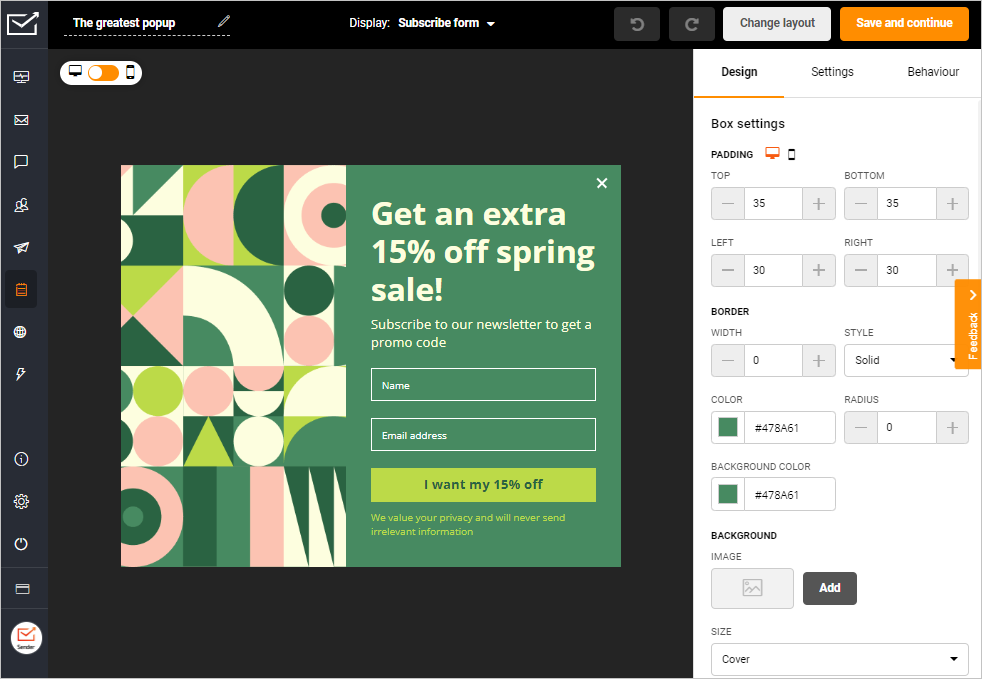
Use Email Segmentation Tools
Modern email service providers offer powerful tools that make implementation straightforward:
- Dynamic segments: Create segments that automatically update as subscriber data changes;
- Behavioral triggers: Set up automated workflows based on specific user actions;
- Predictive tools: Some advanced platforms use AI to identify patterns and suggest effective segments;
- Integration features: Connect your email marketing software with your CRM, ecommerce platform, and analytics tools.
Even small businesses can leverage these capabilities without dedicated technical teams.
Start Simple, Then Grow
Begin with basic segmentation strategies and gradually increase complexity:
- Start with 2-3 broad segments (e.g., customers vs. prospects);
- Test different content approaches for each segment;
- Analyze performance data to identify what works;
- Gradually introduce more sophisticated segments.
Remember that list segmentation is an ongoing process of refinement. In my experience with brick and mortar customers transitioning to digital, simple geographic location segmentation made a huge difference in driving both online and in-store traffic.
10 Powerful Segmentation Strategies
Ready to implement segmentation in your email marketing? Here are ten effective strategies to organize your subscriber list and create more targeted campaigns:
1. By Demographics
Demographic segmentation includes factors like age, gender, location, income level, and family status. This foundational approach allows you to tailor messaging to different life situations.
A clothing retailer might segment by gender and age to promote appropriate product lines, or by geographic location to highlight seasonal merchandise relevant to local weather.
Implementation tip: Combine demographic data with behavioral data for stronger results. A 35-year-old parent in Miami might have very different interests than another parent of the same age and location.
2. By Purchase Behavior
How customers interact with your products provides rich segmentation criteria:
- Past purchasers: Target customers with complementary products;
- Category interest: Promote items within categories they’ve previously purchased;
- Order value: Offer different incentives based on typical spending levels;
- Cart abandoners: Send recovery emails with specific abandoned products.
This behavior-based approach yields high ROI for ecommerce businesses. According to HubSpot research, marketers who used segmented campaigns based on purchase behavior noted as much as a 50% increase in revenue.
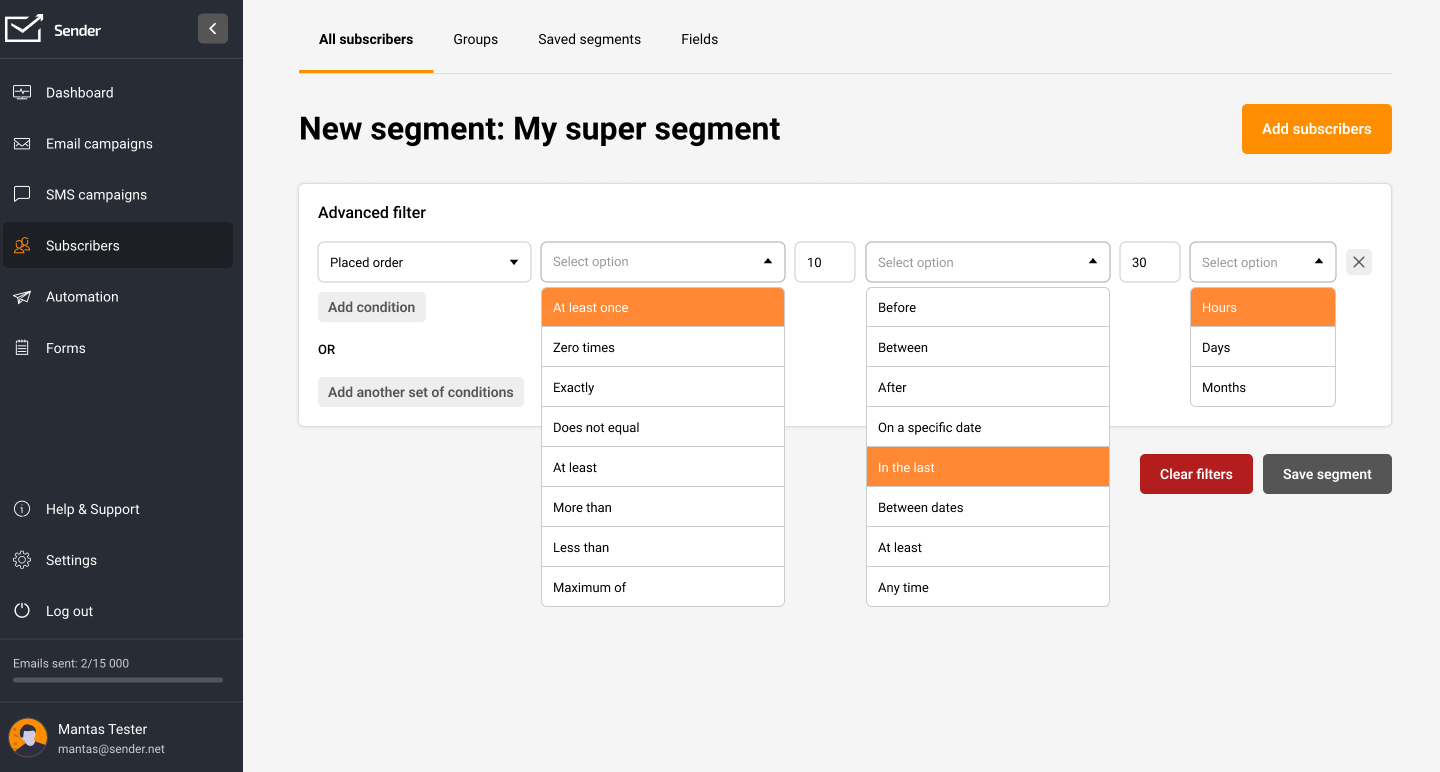
3. By Engagement Level
Not all subscribers interact with your emails equally. Segmenting by engagement allows you to treat different groups appropriately:
- Highly engaged: Reward loyal customers with exclusive content;
- Moderately engaged: Focus on increasing engagement with value-driven content;
- Inactive users: Re-engage those who haven’t opened emails in 3+ months.
Tailor both content and sending frequency based on engagement levels. This simple approach typically improves overall engagement metrics by 30-40%.
4. By Signup Source
The context in which someone joined your list provides valuable clues about their interests:
- Lead magnet downloads: Different guides indicate different needs;
- Landing page conversions: Specific pages attract specific interests;
- Event registrations: Webinar topics reveal subject preferences.
This context-aware segmentation helps you continue the conversation that began during the signup process.
5. By Email Preferences
When subscribers tell you what they’re interested in, pay attention:
- Content topics: Send resources aligned with stated interests;
- Product categories: Highlight new items in preferred categories;
- Email frequency: Respect preferences for communication cadence;
- Communication types: Match content type to subscriber preferences.
Self-selected preferences provide invaluable data for personalized communication.
6. By Customer Journey Stage
Different messaging works at different stages of the customer lifetime:
- New subscribers: Welcome sequences introducing your brand;
- First-time customers: Post-purchase nurturing and onboarding;
- Repeat customers: Loyalty programs and cross-selling;
- At-risk customers: Re-engagement campaigns to prevent churn.
This lifecycle segmentation ensures you’re sending the right message at the right relationship stage.
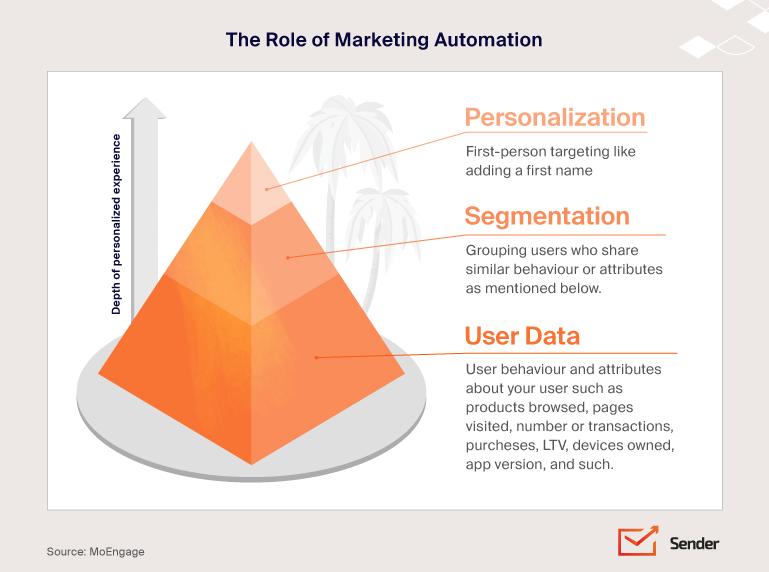
7. By Past Email Behavior
How subscribers interact with previous emails can guide your future strategy:
- Link clicks: Send more of what they’ve clicked before;
- Email opens by time: Optimize send times based on engagement patterns;
- Content preference: Match content types to demonstrated interests;
- Device usage: Format emails appropriately for mobile or desktop readers.
This behavioral data helps refine both content strategy and delivery timing.
8. By VIP/High-Value Status
Your loyal customers deserve special treatment:
- Highest spenders: Exclusive offers and early access to products;
- Brand advocates: Referral programs and testimonial opportunities;
- Longest-standing customers: Anniversary recognitions and loyalty rewards.
Nurturing these segments significantly impacts customer loyalty and lifetime value.
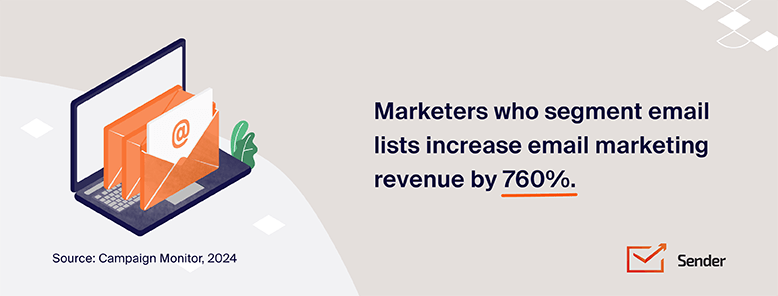
9. By Job Title or Industry (B2B)
For B2B marketers, professional context matters:
- Decision-maker level: Different messaging for executives vs. managers;
- Industry vertical: Customize case studies for specific industries;
- Company size: Address different needs of enterprise vs. small businesses;
- Department: Tailor content to departmental priorities.
This professional segmentation ensures your B2B messaging addresses specific challenges.
10. By Device or Email Client
Technical segmentation improves user experience:
- Mobile users: Shorter subject lines and thumb-friendly CTAs;
- Desktop users: More complex layouts when appropriate;
- Email client: Optimized rendering for various platforms.
This technical approach ensures optimal display regardless of how subscribers access emails.
Segmentation Examples in Action
Let’s explore how different types of businesses implement segmentation effectively:
Ecommerce Product Recommendations
Online retailers like Amazon have mastered purchase-based segmentation. Consider this approach:
- Track customer data including purchase and browsing history;
- Identify patterns and product affinities;
- Create segments based on category interests;
- Send targeted emails showcasing complementary products.
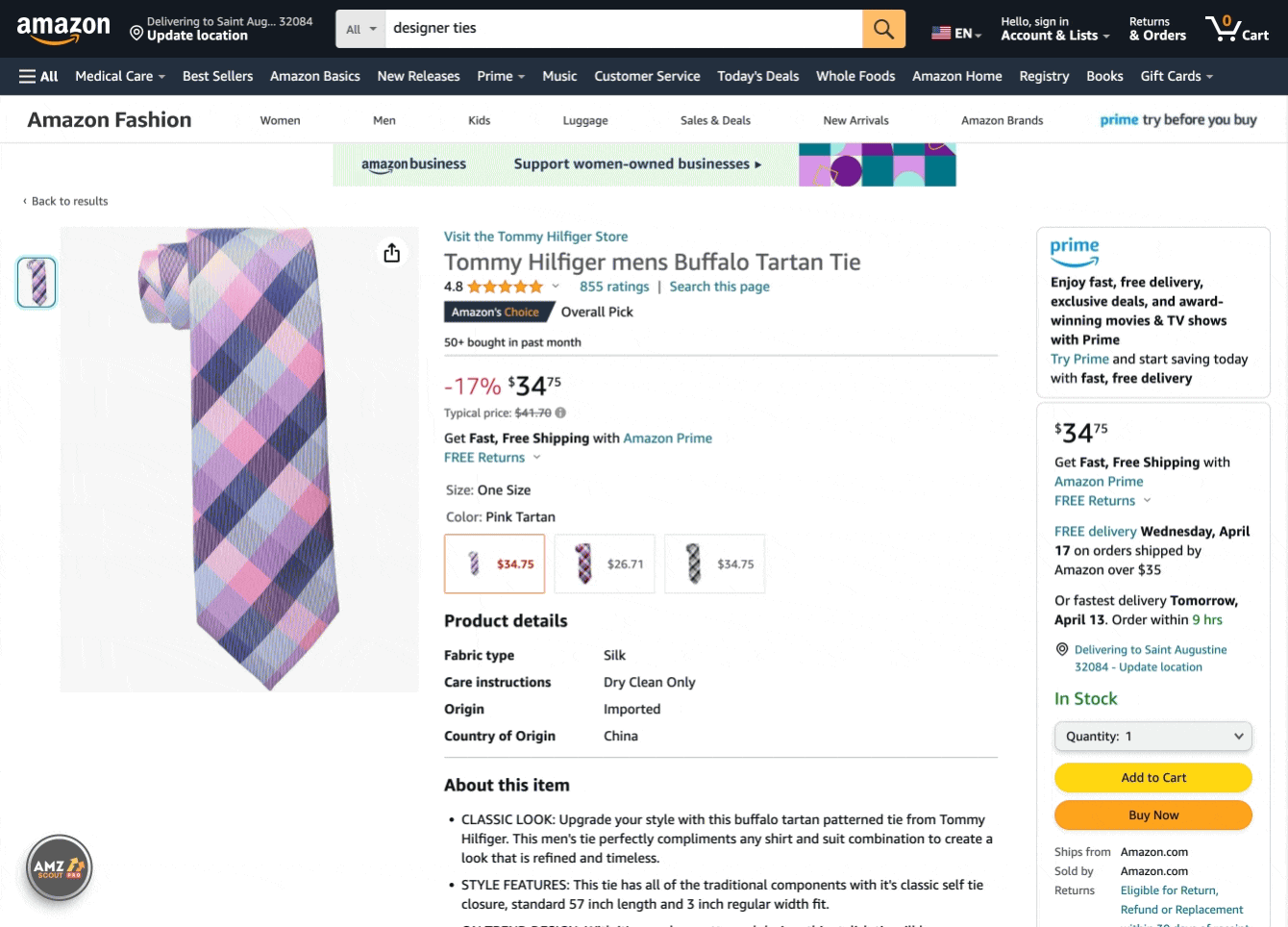
Timberland segments customers who purchased shoes, sending them recommendations for matching hoodies and caps 3-5 days after purchase. According to Experian’s industry research, this targeted approach can improve revenue by up to 30% compared to non-segmented emails.
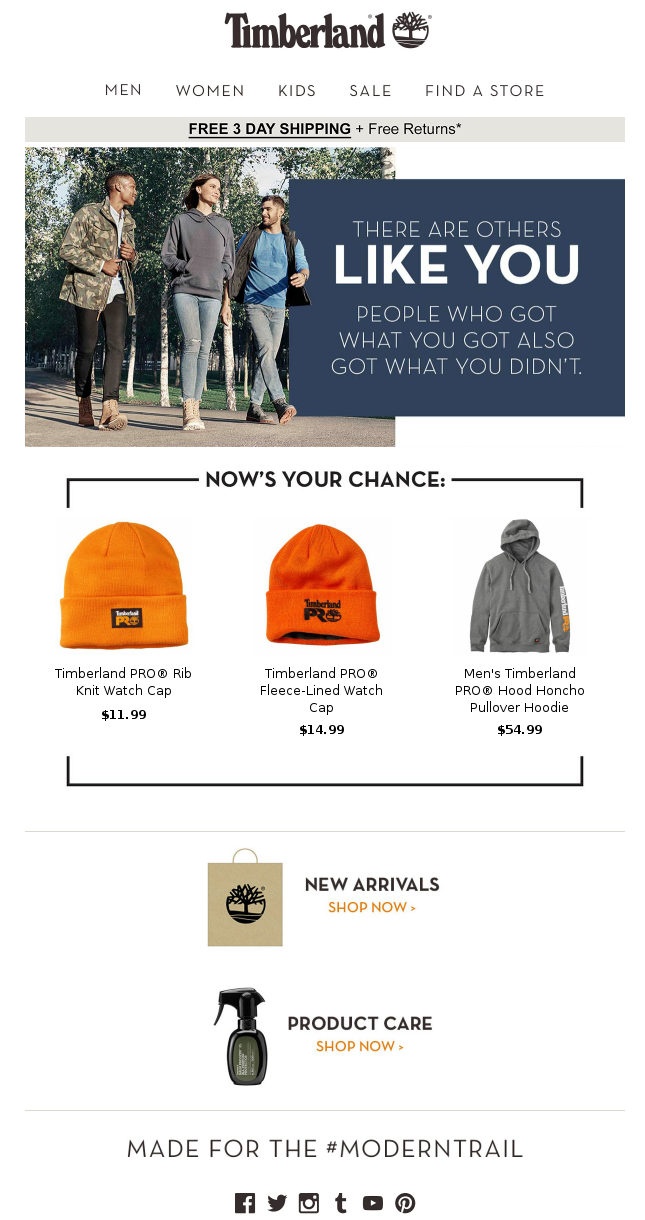
SaaS User Maturity
Software companies benefit from lifecycle and usage-based segmentation:
- Segment by subscription tier (free trial, basic, premium);
- Target customers based on feature usage patterns;
- Create different segments for active vs. at-risk accounts;
- Send relevant tutorials and upgrade incentives accordingly.
This approach moves customers through the sales funnel more effectively, improving both retention and account expansion.
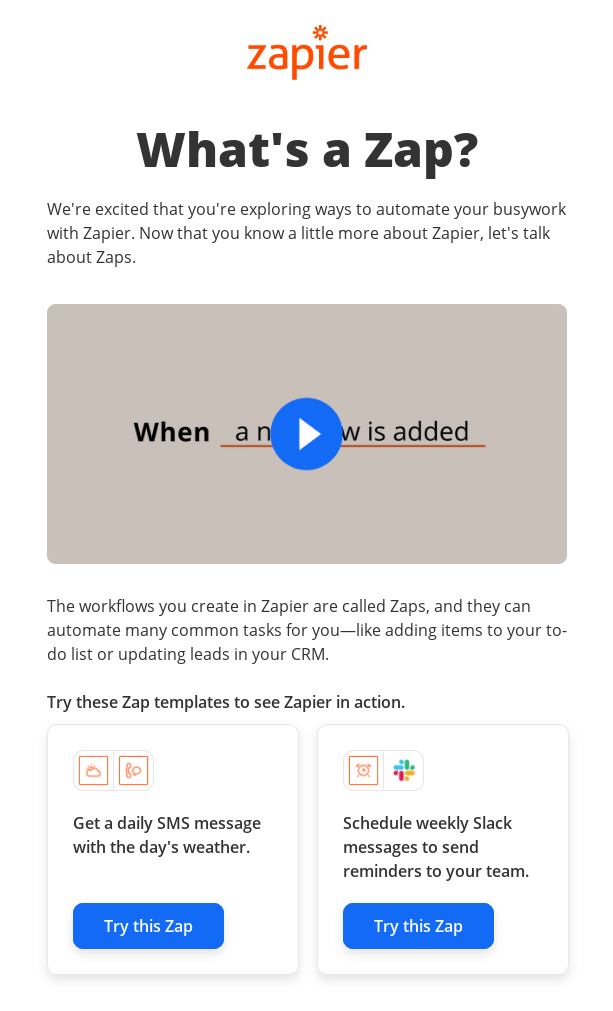
Bloggers: Interest-Based Content Segmentation
Content creators and bloggers can significantly increase engagement by segmenting their audience based on topic interests:
- Track which content categories readers engage with most;
- Create topic-specific segments based on this behavioral data;
- Deliver targeted content recommendations aligned with demonstrated interests;
- Monitor topic engagement to refine future content strategies.
Real-world results: According to Parse.ly’s content analytics research, readers who receive content matched to their previously demonstrated interests are 60% more likely to return to a site and spend 40% more time per session.
For example, a food blogger might segment their audience into distinct groups like “vegetarian recipes,” “quick weeknight meals,” and “baking enthusiasts.” Each segment receives tailored content that matches their specific interests, resulting in higher open rates and stronger audience loyalty.

This approach can significantly benefit your blog post engagement metrics.
B2B: Industry-Specific Newsletters
B2B companies can drive stronger engagement by creating industry-vertical segmentation:
- Segment subscribers by industry, company size, and role
- Customize case studies and success stories to match industry challenges
- Highlight product features most relevant to specific vertical markets
- Adjust messaging to reflect industry-specific terminology and concerns
Real-world results: According to research from the Content Marketing Institute, 72% of B2B buyers say they’re more likely to engage with content customized to their industry.
A marketing automation platform might create separate newsletter tracks for healthcare, financial services, and manufacturing clients. Each newsletter features the same core product updates but presents different use cases, compliance considerations, and success metrics relevant to that specific industry.
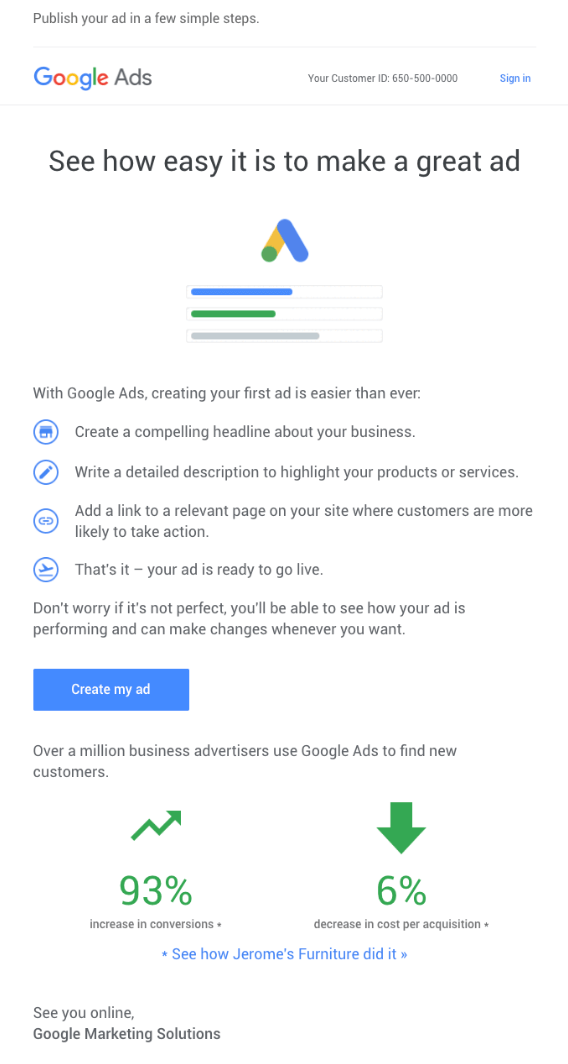
This targeted approach typically results in 35-45% higher engagement rates compared to generic B2B newsletters, according to Marketing Sherpa’s benchmark studies.
The Future of Email Segmentation
As marketing technology evolves, email segmentation is becoming increasingly sophisticated. Artificial intelligence and marketing automation tools now enable predictive segmentation that anticipates subscriber needs.
This is transforming how small businesses and enterprises alike segment customers and create targeted email campaigns to acquire more customers.
However, the fundamental principle remains unchanged: the more relevant your message is to the recipient, the more effective it will be.
By implementing the list segmentation strategies outlined in this guide, you’ll:
- Deliver more value to your email subscribers;
- Dramatically improve open and click-through rates;
- Increase conversion rates across segments;
- Build stronger customer loyalty through relevance;
- Maximize your digital marketing strategy ROI.

